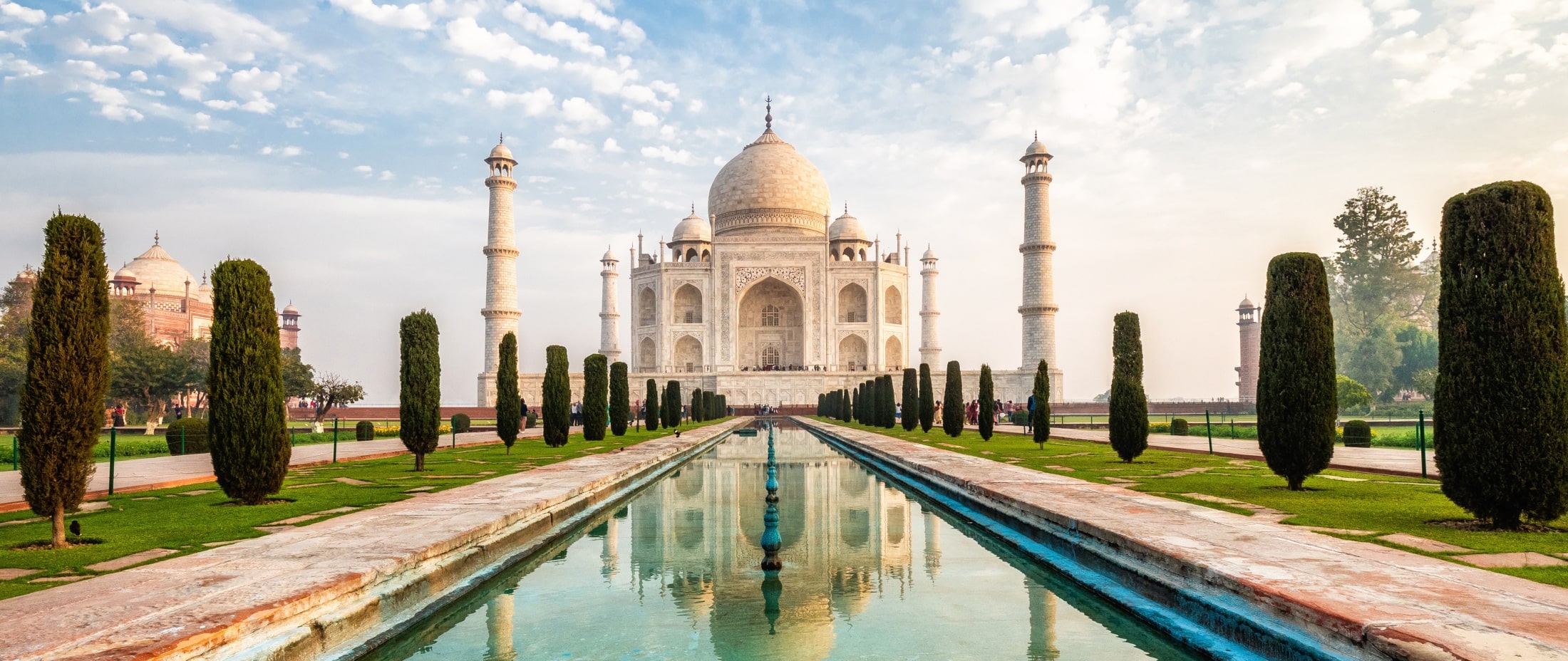
7 new Wonders of the World
Ever dreamt of visiting the seven new wonders of the world? Here we delve into the seven great achievements in mankind’s history, to uncover their history and what to expect when finally standing in front of them for the first time.
1. The Great Wall of China
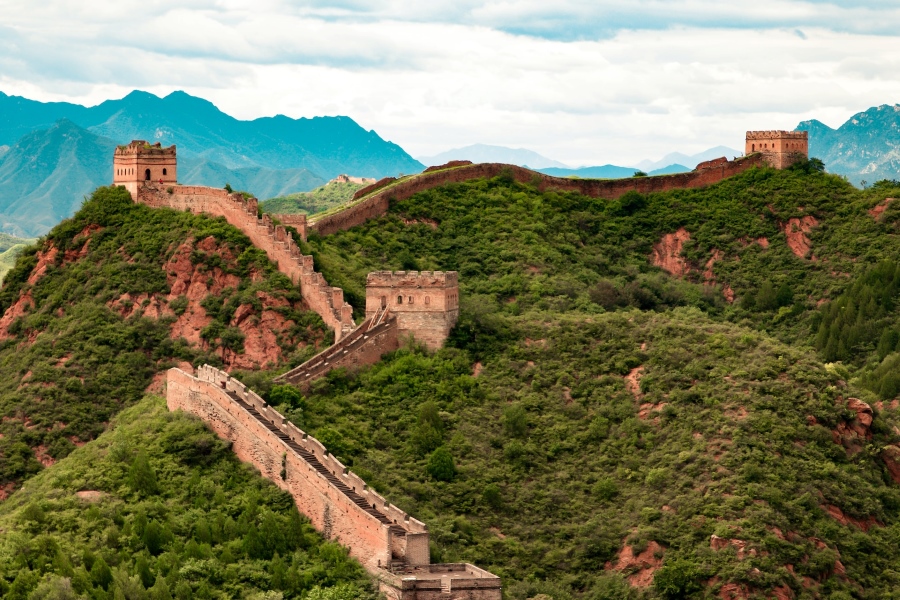 The Great Wall of China © William Olivieri
The Great Wall of China © William Olivieri One of the largest and longest architectural feats ever constructed by man, this monolithic design that spreads from Northern China to Southern Mongolia is spread across over 4,000 km. A military defence project, it started to be built from the 3rd century BC. In c. 220 B.C, under Qin Shi Huang, China's first Emperor, ordered the fortifications be unified.
But it wasn’t until the Ming Dynasty in 1368–1644 that the best-preserved version of the wall that still stands today was constructed. Conceived as a way to defend against Mongol invasions from the North, stretching 5500 km from Mount Hu in Southeast Liaoning province to Jiayu pass in the north-western Gansu province, its construction designated intense guard towers, artillery and warning smoke signals, meaning that whenever an enemy approached the walls from a certain spot, a guard would light a signal at his post alerting others to light their signals, spreading light across the wall to indicate an enemy was approaching.
Today, the wall is now open to the public and has become one of China’s biggest if not biggest tourist attractions. It holds both the historic facilities such as the soldier’s barracks, guard towers and armouries for those interested in Chinese history. But it has also become a very popular hiking destination. The Jinshanling section which trails to Simatai and offers both the well preserved sections of the wall and the sections reclaimed by nature, giving both a scenic natural and historic route for those wishing to explore China’s rich history and rich natural environment.
Most of the rest of the wall is made of reconstruction and was officially named as a UNESCO world heritage site in 1987.
2. The Colosseum of Rome
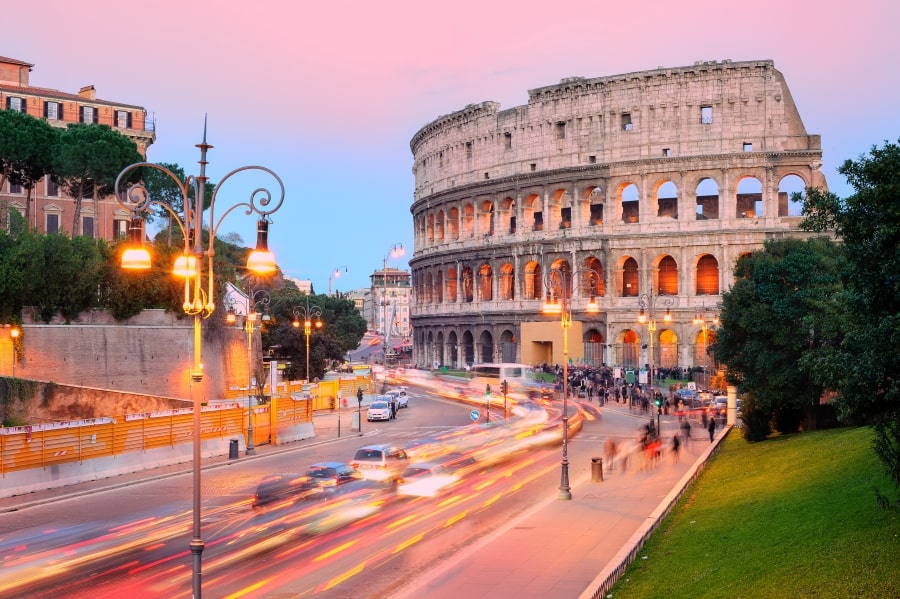 The Colosseum of Rome
The Colosseum of Rome One of most iconic constructions in the world, the Colosseum has been home to some of the fiercest competitions known to man and some of the most brutal entertainment in history. Gladiators, death matches and Christians being fed to tigers and lions were all part of the spectacle that demonstrates the brutal warrior aspect of Roman culture. Now it stands tall still in modern Rome Italy as a reminder of the once mighty and seemingly unstoppable Roman Empire.
Built between 72 A.D and 80 A.D by Roman Emperor Vespasian and is to this day the largest Amphitheatre in the world, it was originally known as the Flavian Amphitheatre, named after the Imperial dynasty that Vespasian belonged to. It was built and often put on tournaments and shows for free for the Roman citizens as a means of gaining popularity amongst the masses that would come to the Colosseum to watch sporting events, chariot races and yes, bloody gladiator sports. Built from Marble and stone, it stands as a testament to the genius Roman engineering that gave to the world also the Rome Forum which is located right next to the Colosseum and is also worth the visit. You can purchase tickets to both the Colosseum and Forum to be viewed during the same day.
Walking into the Colosseum now, you can expect to see old relics of the Roman Empire such as coins, murals, skeletal remains of the wildlife and old Roman weapons, all preserved and waiting to be gazed upon. Of course there is also the Colosseum itself and seeing the different trap doors and underground passages that would be used to bring out Lions, gladiators, slaves and Christian martyrs to the ground where the events would happen.
3. Taj Mahal India
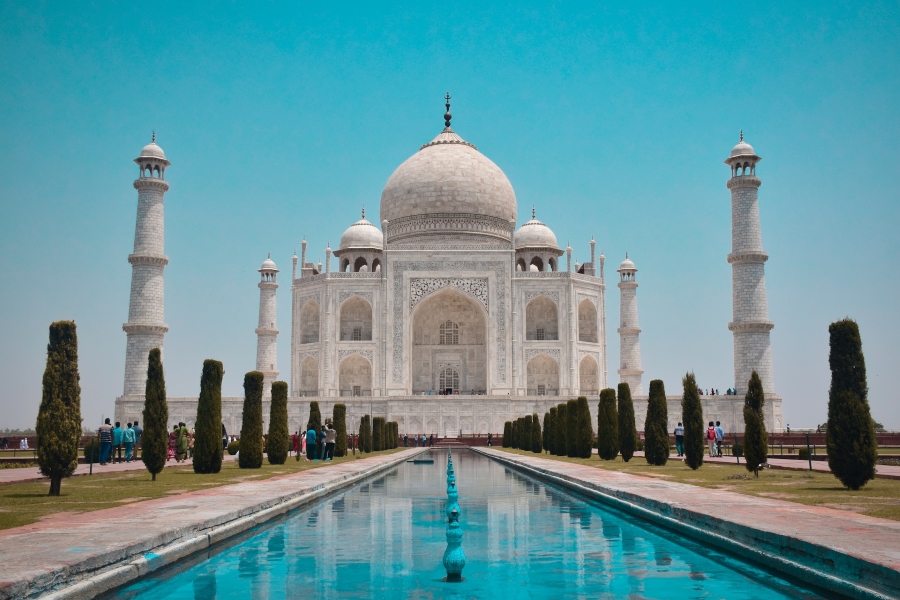 Taj Mahal India
Taj Mahal IndiaWhen Mughal Emperor Shah Jahan lost his third and favourite third wife Mumtaz Mahal after she died during childbirth in 1631, he was so grief stricken he commissioned a monument be built in her honour in 1632. Little did he know that this touching symbol of love and devotion would become one of the greatest landmarks in the world.
The Taj Mahal in Agra on the banks of the Yamuna river is not just a symbol of ever-lasting love but of the architectural ingenuity of a combined influence of Indian, Persian and Islamic styles that have given birth to such a beguiling sight on the eyes.
Taking 20 years to create and with the help of around 20,000 workers coming from Turkey, Syria and Iran, this work was the product of not just love but of mere genius. As dedication for his lost love and his own personal feelings, the white marble encompassing the construction reflects the sun, the moon and the sky, so throughout the day the Taj Mahal will often change colour from vivid yellow during the day to deep and sombre blue during the night. It was also built with geometry in mind, making each side the same length and size so as to create a totally symmetrical design of everything being totally equal.
Inside this marvellous building is the glorious use of pietra dura (a technique that uses gems and jewels) and there are around 28 different precious stones littered throughout the inner workings. Some walls have bloodstone whilst others have garnet and many more and they often create beautiful and colourful patterns and flowers such as poppies and tulips. This goes alongside passages from the Koran all written in fantastic Arabic calligraphy.
4. Chichen Itza in Mexico
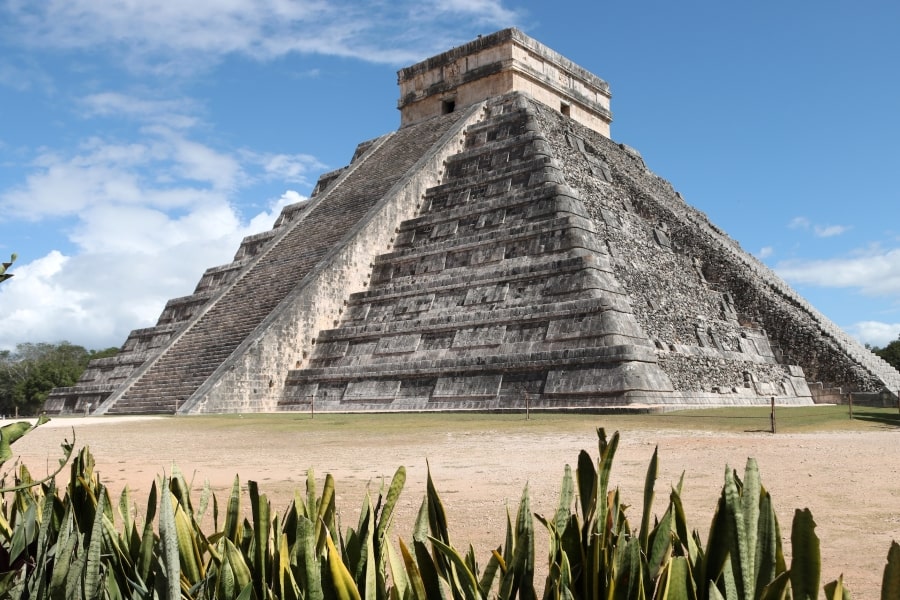 Chichen Itza in Mexico
Chichen Itza in MexicoLocated 120 miles from the luxurious resort town of Cancun in Mexico Latin America lies one of the most ancient historical landmarks. The remnants of the lost Mayan civilisation, Chichen Itza or as it is also called El Castillo or Temple of Kukulcan.
The famous Mayan pyramids and relics of the Mayan city were constructed approximately around 400 to 600 A.D though there is no concrete evidence of when it was built as no records have survived throughout the years which included the brutal Spanish occupation in which many artefacts were presumed lost or destroyed.
While most famously linked to the native Mayans, the ruins and especially the pyramid El Castillo have influence from the Toltecs, another ancient people of Mexico who would come to invade Chichen Itza around the 10th century. In fact, El Castillo is widely considered to be built during a time of Toltec occupation.
The city of Chichen Itza was one of the largest and most cosmopolitan cities in pre-Columbian Latin America. It was primarily a large commercial centre where people from all across the Mayan Empire and even other civilisations would conglomerate, trade and conduct business. Spanning suburbs, markets and of course temples. Its location by a large cenote would also provide the population with available and clean water, further flourishing the empire and civilization and propelling them above many of their neighbours especially in the early years of the Empire.
One key fact of interest for visitors is the Mayan interest in astrology which is on full display at Chichen Itza. Many of the temples and pyramids are built in ways to study astrology and worship the gods in the stars. The Pyramid of Kukulkan is another such sign of Mayan knowledge of astrology as the temple was built with 365 steps and each side represented one of the four seasons.
5. Petra in Jordan
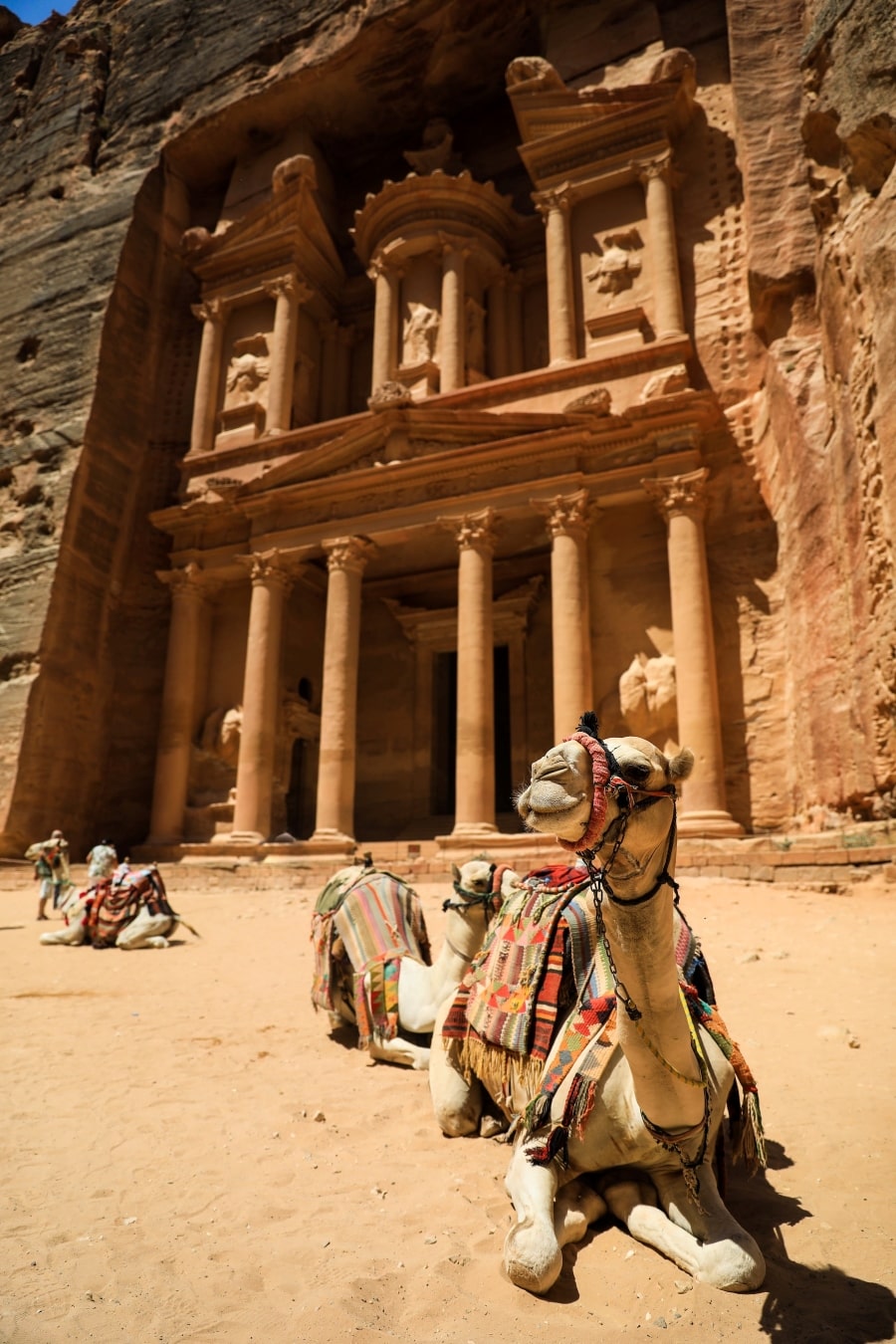 Petra in Jordan
Petra in JordanMost famously recognised as being the site of the holy grail in Indiana Jones and the Last Crusade is the city which gets its name from the Greek word ‘Petros’ meaning ‘rock’, Petra, located in Jordan has become one of the most outstanding visits to Jordan. By traversing through the narrow Siq to reach the ruined city, you will find the well preserved ruins lying in between cliffs and gorges.
It is thought to have been built around 312 B.C making it one of the oldest cities in the world and the oldest of the seven wonders of the world if not counting the Pyramids of Giza. Originally the capital city for the Nabataean Empire, it served as one of the most important trading hubs in the world, connecting the West to the East, with traders bringing with them goods such as incense and silk from all across the silk road.
The Nabateans, originally a nomadic tribal Arab people from the desert, settled in Petra and carved from the stone the mighty trade hub and commercial centre, using their knowledge of irrigation, desert harvesting and the land they knew so well to construct this city and its defences. Upkeeping their peoples whilst fiercely combating any enemies trying to take their city and their land from them.
Unfortunately, with the Roman Empire expanding, the mighty Nabateans and their city of Petra fell to Roman occupation in 106 A.D where, under the Roman Empire, the city of Petra lost its power and influence as a commercial hub as the Romans found easier ways to transport their goods across without the need of the commercial city of Petra. The Nabateans would eventually fade into history and return to their nomadic lives as Islam began to dominate the area. Currently, it is home to around 800 tombs and the most well known of these tombs is titled the Treasury which is the most iconic site in Petra.
6. Machu Picchu Peru
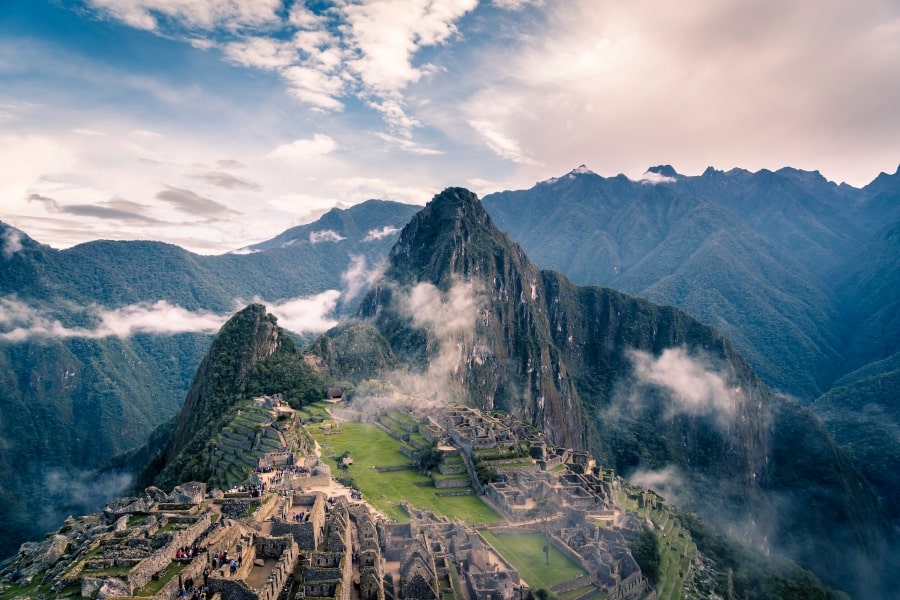 Machu Picchu Peru
Machu Picchu PeruAfter trekking for 4 days and 3 nights along the magnificent Inca Trail, your eyes will set their gaze upon the breathtaking site of history's most serene and awe inspiring wonders, Machu Picchu. Around 7000 feet above sea level in the Andes mountains in Peru lies the relics of the old Inca city. Its name from Quechan translates to ‘Old Mountain’.
Predicted to have been constructed around 1450 A.D by the large Inca Empire, this once thriving and bustling metropolis of Pre-Columbian Latin American. While it is not fully understood by modern historians the purpose for the city, whether that be a royal estate or a religious holy site, what is clear is that Machu Picchu is something truly special not just for its historic significance but also for its architectural achievements.
One reason why Machu Picchu deserves not just its 1983 UNESCO world heritage site as well as World Wonder status is due to its importance in obtaining just a glimpse into the Inca civilization. When the Spanish arrived and began making advances on the Incas in 1532 (leading to the Inca’s demise and enslavement by Spanish hands in 1572), many Inca artefacts and cities were lost. Often destroyed and looted by the Spanish. However, due to its hidden location in the Andes, Machu Picchu remained undiscovered and practically untouched by the Spanish. It was only in 1911 when American explorer Hiram Bingham III climbed through the Andes and was the first pair of eyes to view the abandoned city in hundreds of years.
Another key detail behind its grandeur is the architectural feet and ingenuity the Inca’s literally carved out for themselves. Due to its location, it might surprise many to learn that the Incas did not use wheels in order to transport the heavy stones to the site where 150 different buildings were constructed. Each stone weighed around 50 pounds. So how did the Inca accomplish such a task of getting the stones along the long Inca trail to Machu Picchu? Simple: by hand and foot.
7. Christ the Redeemer in Brazil
 Christ the Redeemer in Brazil
Christ the Redeemer in BrazilOverlooking the city like a guard and protector of Mount Corcovado in Rio de Janeiro in Brazil, Christ the Redeemer is the most recent Seventh Wonder of the world but by no means the least important. Towering at around 98 feet and with the arms spanning 28 metres across, this giant and welcoming figure keeps his watchful eyes towards his domain of the land of smiles and carnivals.
Completed in 1931, Christ the Redeemer has become the symbol of not just the city in which it is based but Brazil as a whole. It is the largest Art Deco styled statue in the world and is made from reinforced concrete clad in a mosaic of thousands of triangular soapstone tiles which only furthers its powerful yet benevolent warmth that radiates from Christ's near embrace.
Originally conceived by a Vincentian priest Pedro Maria Boss in the mid-1850s as a tribute to the Magnanimous himself, Emperor Pedro II of Brazil’s daughter Isabel the redemptress. However, due to political reasons such as when Brazil officially became a republic in 1889 and the new legislature demanded a separation from Church and State the project was often dismissed. It wasn’t until 1920 when the Catholic circle of Rio announced a second proposal for the statue and through organising a group called Semana do Monumento or in English the Monument week that through donations and the dedication displayed by Brazilian Catholics that it was finally funded.
Bringing on board French sculptor Paul Landowski to design the statue with Romanian artist Gheorghe Leonida designing the head with the help of Brazilian engineer Heitor de Silva Costa and artist Carlos Oswald, they would bring this Catholic dream to life.
The site was chosen due to its looming presence over the city. It was meant to show that no matter where the people of Rio were, that Christ was always there, watching over them. This was significant as the Catholic circle of Rio had long feared the Brazilian people under the new republic would become a godless people. Therefore, the Catholics felt the need to remind the people of Rio and of wider Brazil, especially during the country's many tumultuous times never to lose faith and that Christ is always with them. It is a reminder of strength, faith and perseverance.
The new Seven Wonders of the World: Powerful time capsules
The new Seven Wonders of the World are not just captivating and incredible symbols of each of their respective countries in which they inhabit, they are powerful time capsules that connect the eyes of the modern world with the eyes of the old. When the ancients first built these monuments, perhaps they didn’t know what they had built and what legacy they would leave to the world.
To discover more of the world’s wonders, check out our Guide to Japan.
Credits for the Main photo: © Adobe Stock
